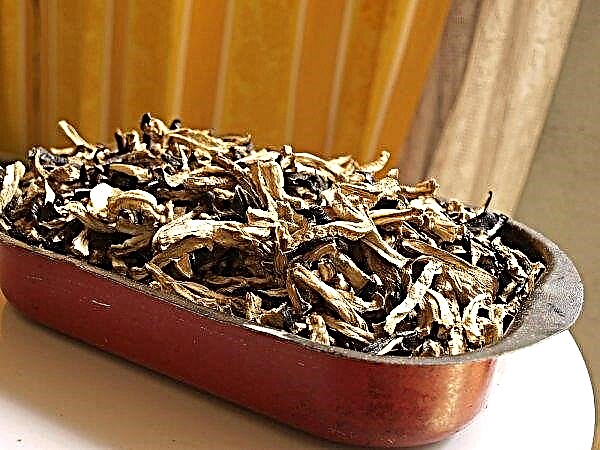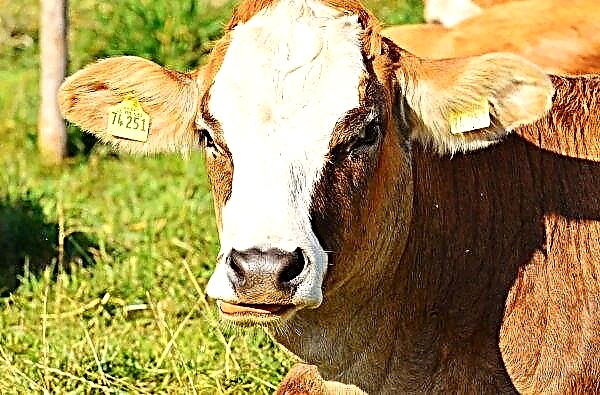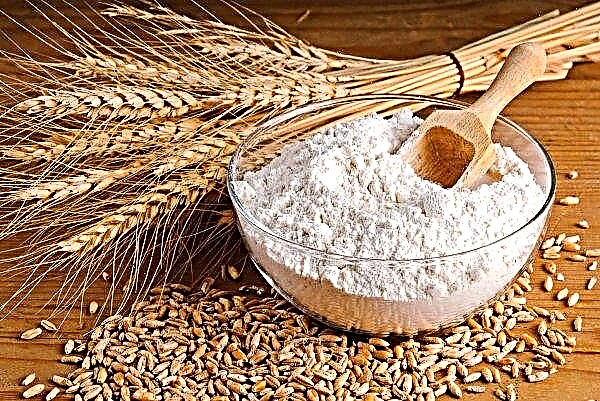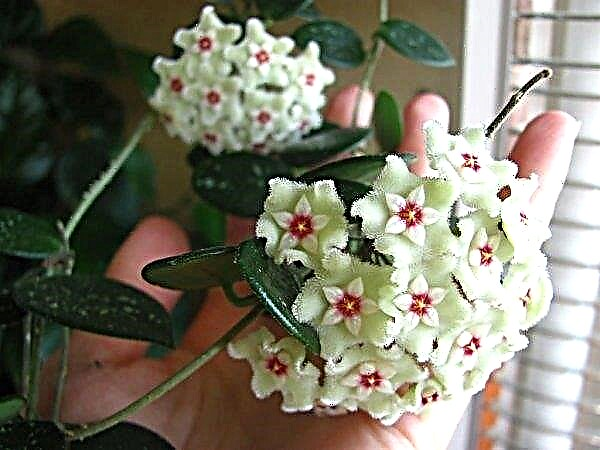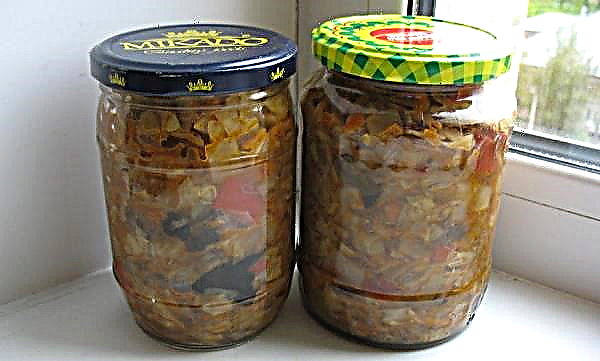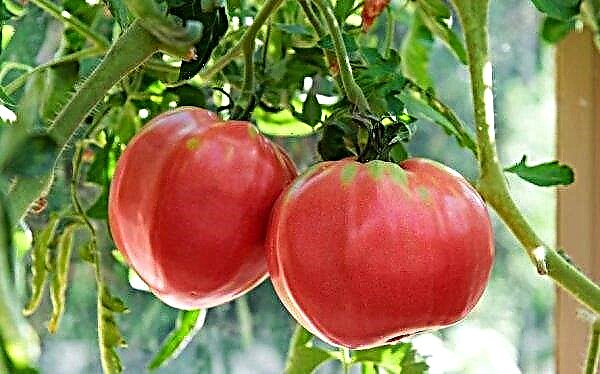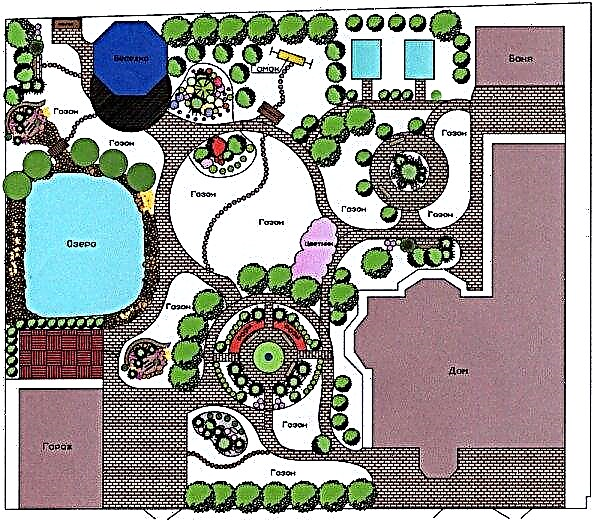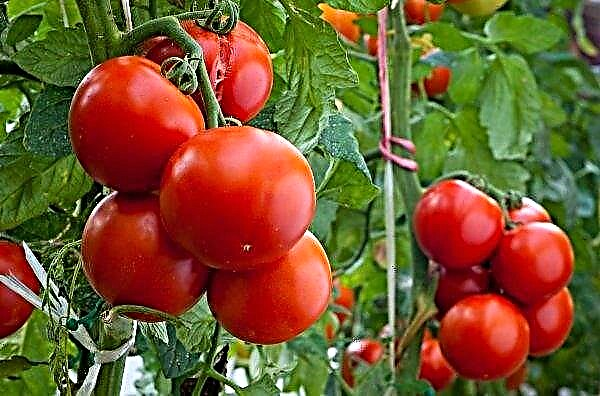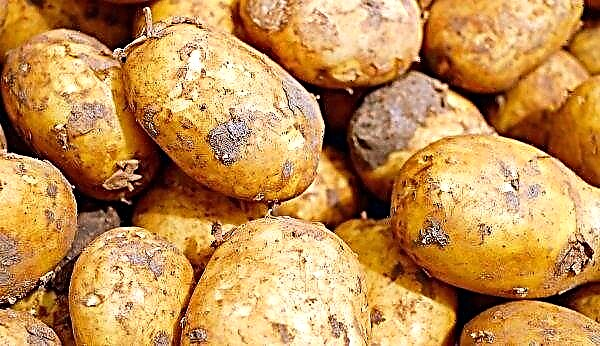Primrose (primrose) is considered a mandatory species on the site. The plant is one of the first to bloom in the garden, which creates a special mood and romantic atmosphere after prolonged cold weather. The article details the primrose of Viale, as one of the most successful varieties of the flower, and also provides a detailed description of the technology for growing the species in the open ground.
View description
The primrose of Viale (or orchid) is a perennial plant belonging to the genus Primroses of the family Primrose. Under natural conditions, the flower can be found in the north of the African continent, the Middle East in Europe, as well as Central Asia. The natural habitat of the species are evergreen forests, rocky meadows of highlands, up to 4 thousand meters above sea level. In culture, the plant is used for landscaping the garden, as well as planting in flower beds.
Did you know? In the territory of Ancient Russia, primrose was considered a traditional cult plant. It was used for various ceremonies, and was also associated among the Slavs with vigor and good health.
It is a small grassy flower up to 20 cm high. Its basis is a basal rosette, from which several lanceolate leaves of saturated green leave. The length of each leaf can be up to 30 cm, while the width is no more than 5–7 cm. There are small teeth on the edge of the leaf blade, the front and back of the sheet are covered with small whitish hairs. The rhizome of the plant is not branched, located in the upper horizons of the substrate.
The main advantage of the species are elegant and unique bell-shaped flowers. They differ in the correct form, as well as five regular petals. Each petal has a saturated color, characterized by lavender and lilac tones, while the buds have a bright red hue. The diameter of the opened flower is 1.3–1.5 cm.
Individual flowers are collected in characteristic spike-shaped inflorescences with a pyramidal structure. They are located on elongated peduncles, 15–20 cm high. At the same time, the flower arrow reaches a height of about 18 cm and is distinguished by a light powdery coating. The plant can bloom throughout June-July. After this, the primrose forms a small box-shaped fruit with numerous small seeds.
Outdoor landing
Compliance with a specific planting technology can be called one of the main conditions for growing a healthy and aesthetic flowerbed, in which plants will not be susceptible to any pathologies. For this, first of all, you will need to choose the right place for planting, as well as grow healthy and viable seedlings from seeds.
Selection and preparation of seed
In most cases, the main genetic material for growing Vial primrose is seeds. Seedlings are rare in the market, so they are only planted during the propagation or transplantation of old bushes. The choice of seed is started with all care.

First of all, to buy good seeds, you need to look at their expiration dates. The most suitable are the seeds collected about 2-3 years ago. To separate the seed without the germ, the seed should be placed in a glass and pour water to the top. Quality seeds will settle to the bottom, and those that have surfaced should be discarded. Germination of seeds begins in the first half of February, because before the dive into the open soil the seedling must form at least 2-3 pairs of full leaves.
Important! The soil a week before sowing must be sterilized. To do this, it should be well soaked in boiling water or kept in the freezer for at least 3 days (at –20 ...– 25 ° С).
The procedure includes the following steps:
- Soak the seeds in a 2% potassium permanganate solution for about 20 minutes, then rinse and dry well.
- Prepare the soil for planting and fill it with garden containers. For this, a mixture of equal parts of sand, peat and humus or any ready-made substrate for indoor plants is suitable.
- Place a thin layer of snow on the surface of the substrate, and then generously pour seeds on it.
- After the melt water is absorbed, cover the garden bowl with a lid and refrigerate for 2–4 weeks.
- Remove the seedlings from the refrigerator and place in a warm (+18 ... + 20 ° C) and illuminated place, protected from direct sunlight. Before emergence of shoots garden containers should be covered with transparent polyethylene or glass. Then the shelter is removed, and the seedlings are provided with moderate, but regular watering, as well as the temperature regime within +16 ... + 18 ° С. For planting in an open environment, crops become suitable around the second half of May.

Landing place
Grown seedlings should choose the right place for planting. Suitable for this are open, but protected from direct sunlight and draft territories. Attention should also be paid to the soil, a well-fertilized loamy substrate is suitable for this. Dense soils (clay, chernozem) should be lightened with river sand (1 bucket per 1 m²) and vermiculite (2 kg per 1 m²). If possible, it is also recommended to add sphagnum moss to the soil. Be sure to fertilize the soil 2 weeks before planting with humus, rotted manure or compost (2 kg per 1 m²).
Technology
Often, primrose planting is not difficult, because it is carried out according to the standard principle. However, the general features of the culture also imply the observance of certain specific requirements.
To land correctly, you must follow these steps:
- Lightly moisten the soil in containers, after the moisture is absorbed, carefully remove the seedlings.
- Treat the aerial part of the plants and the root layer of the soil with the Fitosporin solution. Wait 10–20 minutes until the moisture dries.
- Create 5 × 5 cm wells (depth × diameter) in the area. Moreover, in the case of group planting, the distance between adjacent seedlings should be at least 10-15 cm.
- Place the primrose in the ground, tighten it well in the soil, and then water the flowerbed.
Video: planting primrose
Outdoor Care
To provide the young seedlings of the primrose of Viale with the necessary conditions for growth, planting should be surrounded by increased attention. The culture requires daily care, which is the main condition for continuous flowering. To do this, you need to properly water, feed and trim the flower, as well as qualitatively prepare it for wintering.
Watering and feeding
All primroses are considered hygrophilous plants, so the flower needs regular watering. In spring and autumn, the procedure is performed every 2-3 days. In summer, as well as during flowering, the hydration rate is increased to 2 procedures per day (morning and evening). For irrigation use only clean and settled water, with a calculation of about 3 liters per plant.

The plant also needs regular top dressing, only they will allow for a long and effective flowering. Fertilize the soil 1 time in 7-10 days, throughout the growing season, until the end of flowering. Complex potassium-phosphorus fertilizers are used for this, the concentration of solutions is used at that half as much as recommended by the manufacturer. Fertilizing with organic matter is done in early spring or autumn, using mullein solutions (1:10) for this purpose with a flow rate of 5-10 l per 1 m² of flowerbed.
Important! Nitrogen fertilizers are contraindicated during the period of active vegetation. Such top dressing will lead to a plentiful increase in green mass, which almost always causes inhibition of flowering.
Pruning
In most cases, Viale's primrose does not need pruning. This is a herbaceous plant, so the lifespan of its aboveground mass is no more than 9 months. However, to improve aesthetics at the end of flowering, it is recommended to prune flower stalks. In this case, it is forbidden to remove leaves, this can lead to a weakening of the bush and its freezing.
How to prepare a plant for winter
In the majority of cases, primrose tolerates winter frosts to –30 ° С, and the plant does not require special preparation. The natural leaf litter of the bush and the snow cap allow you to create the optimal microclimate for a safe wintering.
 It is recommended to cover the bush with spruce branches. This will protect it from sunburn in the autumn clear days, as well as to avoid freezing of the outlet in case of snowy winters.
It is recommended to cover the bush with spruce branches. This will protect it from sunburn in the autumn clear days, as well as to avoid freezing of the outlet in case of snowy winters.
Breeding
Almost all members of the family Primrose are excellent in reproduction. At the same time, bush division and cuttings are most often used for this. This allows not only to avoid degeneration of the species, but also to accurately preserve all the signs of the mother bush in new forms.
Division
The best period for dividing the bush is considered approximately 4–5 years after planting. Upon reaching this period, the primrose often dies or sharply reduces the flowering activity. They begin the procedure in early spring, no later than the second half of April. To do this, dig a mature bush, and then use a sharp knife to divide its root system into several fragments.
Do this so that at least 1 outlet remains on each split. In this case, the places of cuts must be treated with crushed charcoal, in order to avoid infection of the young bush with fungi. After that, each fragment should be planted in a new place.

Cuttings
Propagation of young bushes is carried out by cuttings, using the so-called leafy cuttings. The beginning of summer is considered the most acceptable for this, i.e. only after reaching this time the plant will form full leaves. For propagation, a full leaf is separated from a healthy bush, together with the petiole and at least 1 kidney. After that, you need to cut off the top from the leaf, and then plant it with the petiole down into any prepared soil for indoor plants.
Germinate the stem in a moderately lit warm place, at a temperature of +18 ... + 20 ° С, providing regular watering (the substrate should always be slightly moistened). After the seedling has taken root and forms 2 pairs of new leaves, it must be dived into a pot with a diameter of about 10 cm.In it, the plant must be grown until the next season, after which it must be dived into the open ground in spring (April-May).Did you know? In England, some varieties of primrose are used as food. Young leaves of the bush serve as the best alternative to more traditional greens, and the rhizome is used as a spicy note to dishes.

Diseases and Pests
Pests and specific infections are considered the main danger for primrose. Often they lead to inhibition of the life of the bush, which in advanced cases almost always means its death. That is why, after the first symptoms of damage, you should immediately begin to fight against pathogenic organisms.
The most dangerous infections of primrose:
| Title | Methods of struggle |
| Root and stem rot | It is not amenable to treatment; diseased bushes are dug up and disposed of. |
| Fusarium | It is not treatable; infected bushes need to be dug up and burned. As a prophylaxis, the flowerbed should be treated with bleach (150 g per 1 m²). |
| Gray rot | Double treatment of plants with the drug "Fundazol", "Oksikhom" or "Acrobat". |
| Spotting | Spraying with Oksikhom, Fitosporin or Bordeaux liquid. |
| Powdery mildew | Every 10 days, infected bushes are treated with colloidal sulfur until the manifestations of infection are completely eliminated. |
| Mosaic | It does not give in to treatment, the affected bushes are dug up and burned. After this, the soil in the flower bed must be sterilized with bleach (200 g per 1 m²). |

No less dangerous for primrose are pests. Besides the fact that they become the main reason for the decrease in decorativeness and wilting of the green mass, insects are often carriers of infections. And this can threaten the gardener with a double problem.
The main pests of the species Viale:
| Title | Drugs for the fight |
| Spider mite | Any complex insecticide |
| Leaf miner | Any complex drug based on pyrethrin compounds |
| Thrips | Fufanon, Askara or Spark |
| Aphid | Biotlin or Spark |

Primula Viale is one of the most prominent representatives of the family Primrose. The plant is distinguished by elegant and bright inflorescences, while it can please the gardener with bright flowering for several seasons. However, this species is considered whimsical enough, therefore, in order to achieve its successful growth and flowering, daily care for the flower bed should be provided.

